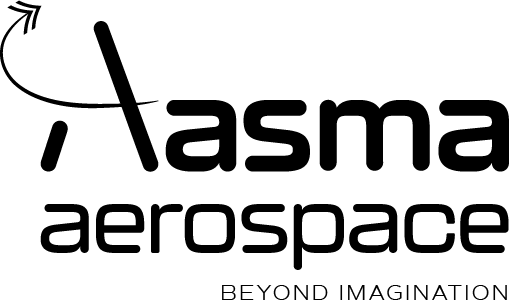How to Build a Drone – In-Depth Guide (Part 1)
How Drones Fly and the Equations That Make It Happen
The sky isn’t the limit—it’s just the starting line. Whether you’re a drone enthusiast, robotics engineer, or hobbyist with big aerial dreams, building your own drone from scratch is one of the most rewarding projects you can take on. But before you can optimize for long flight times, smooth control, or powerful payloads, you need to understand how drones fly and what equations define their performance.
In this first part of our in-depth series, we’ll break down the essential aerodynamics, flight forces, and equations that form the foundation of any successful drone build.
How Drones Fly: The Physics Behind Flight
At its core, flight is a matter of balance—specifically, balancing four primary forces:
- Thrust
- Lift
- Weight (Gravity)
- Drag
In multicopters like quadcopters, thrust is generated vertically by spinning propellers. Each rotor spins in the opposite direction of its neighbor to cancel out torque. Thrust is what allows the drone to overcome its weight and rise into the air.
Multicopter Forces
Multicopters don’t rely on wings for lift. All lift is generated by upward thrust from propellers.
- Hovering: Total thrust = weight
- Climbing: Total thrust > weight
- Descending: Total thrust < weight
By varying the speed of individual motors, you can tilt the drone in different directions—this enables pitch, yaw, and roll for full 3D maneuvering.
Fixed-Wing Forces
Fixed-wing drones use wings to generate lift from forward motion.
- Lift: Created as air flows over wings
- Thrust: Generated by propellers pushing the drone forward
- Drag: Resists forward movement
- Weight: Countered by lift in steady flight
These drones are more energy efficient over long distances but lack the hovering capabilities of multicopters.
The Four Forces of Drone Flight
1. Weight
Weight is the force of gravity acting on the drone’s mass.
Weight (W) = mass × gravity = m × g
Where:
- m = mass of the drone (kg)
- g = 9.81 m/s² (acceleration due to gravity)
2. Thrust
Thrust is produced by the motors and propellers pushing air downward
Thrust per motor (T) = Total thrust / Number of motors
To hover, thrust must equal weight.
Example: If your drone weighs 2 kg:
Total thrust = 2 × 9.81 = 19.62 N
For a quadcopter: T = 19.62 / 4 = 4.91 N per motor
3. Lift
Lift is specific to fixed-wing aircraft and depends on airfoil shape and velocity. In multicopters, lift is synonymous with thrust.
4. Drag
Drag is air resistance. It increases with speed and frontal area. Lowering drag improves efficiency and extends flight time.
Drone Flight Equations You Should Know
Understanding drone equations helps you make smarter design choices—whether optimizing for flight time, payload, or efficiency.
1. Hover Equation (Multicopter)
For a drone to hover:
Thrust (T) = Weight (W)
T = m × g
If you want hover stability, design your motors to provide twice the thrust of the drone’s weight:
T_required = 2 × m × g
This ensures headroom for maneuvering and carrying payloads.
2. Flight Time Equation
This equation estimates how long your drone will stay in the air:
Flight Time (t) = (Battery Capacity × Voltage) / Power Consumption
Or, more precisely:
t = (E_battery / P_total)
Where:
- E_battery = Battery energy in watt-hours (Wh) = Ah × V
- P_total = Power consumed by motors, ESCs, and electronics (W)
Example:
A 22 Ah, 14S (51.8 V) LiPo battery = 22 × 51.8 = 1139.6 Wh
If the drone consumes 200 W on average:
t = 1139.6 / 200 = 5.7 hours ≈ **57 minutes**
(This is theoretical—real-world losses apply.)
3. Propeller Efficiency Equation
Propeller efficiency is defined as:
η = Thrust / Power (N/W)
A more efficient propeller generates more thrust with less power. Look for propellers that provide your target thrust at the highest N/W ratio possible.
Drone Types & Their Aerodynamic Trade-Offs
Multicopters
Pros: Hovering, vertical take-off/landing (VTOL), agile movement
Cons: Lower energy efficiency
Use Case: Filming, inspection, delivery
Fixed-Wing Drones
Pros: Longer range, higher efficiency
Cons: No hovering, runway or launcher needed
Use Case: Mapping, surveillance, agriculture
Design Decisions That Affect Performance
1. Motor & Propeller Selection
- Bigger propeller = more thrust, but more power required
- More blades = more lift, but more drag
- Match Kv rating to voltage and prop size (Low Kv = more torque, High Kv = more RPM)
Rule of thumb: High-torque motors (low Kv) are ideal for big props and heavier drones.
2. Battery Choices
- LiPo batteries are standard for drones due to their energy density
- Capacity (Ah) impacts flight time
- Voltage (V) determines motor speed
- C-rating = Discharge rate — must support your max current draw
Energy = Ah × V → more energy = more air time.
But higher capacity also means more weight, so balance carefully.
3. ESC (Electronic Speed Controller)
- Acts as the throttle translator between the controller and motor
- Needs to support the voltage and current draw of your motors
- Must be matched to your motor’s max current + 10–20% buffer
How to Test and Validate Your Drone’s Performance
Once you’ve calculated your specs, testing is everything. Use a propulsion test stand to measure:
- Thrust
- Torque
- RPM
- Power draw
- Efficiency
Tools like Tyto’s Flight Stand 15/50/150 let you simulate real flight conditions and refine your build for peak performance.
Real-World Design Example: Hovering Drone
Let’s say you’re building a quadcopter for aerial inspection (e.g., power line surveys). Target specs:
- Weight: 20 kg (with payload)
- Thrust required per motor: (20 × 9.81) / 4 = ~49 N
- Propeller efficiency target: ~16 N/W
- Battery size: Max 7.5 kg, 22 Ah, 14S (51.8 V)
- Expected current draw: 108 A
Using these values, you can estimate
- Peak power consumption
- Propeller size (e.g., 40″)
- Motor Kv range
- ESC and connector ratings
Testing confirms the right motor-propeller combo gives you 50 N thrust at ~64% mechanical efficiency. Using a matched ESC and lightweight frame, your estimated flight time is 33 minutes.
Conclusion
If you’re curious about how to build a drone, the Aasma Aerospace guide is the perfect place to start. This beginner-friendly resource explains how to build a drone step by step, covering everything from selecting components to wiring and flight testing. Whether you’re a student, hobbyist, or aspiring engineer, learning how to build a drone with Aasma Aerospace gives you both the knowledge and confidence to take flight.
Building a drone is easier and more rewarding than ever with the Aasma Aerospace guide. Designed for beginners and hobbyists, the Aasma Aerospace guide walks you through every step—from understanding basic flight physics to assembling motors, propellers, and controllers. With easy-to-follow instructions, safety tips, and expert insights, the Aasma Aerospace guide ensures you not only build a drone but also learn the science behind how it flies. Visit our product page for a better idea and purchase.

